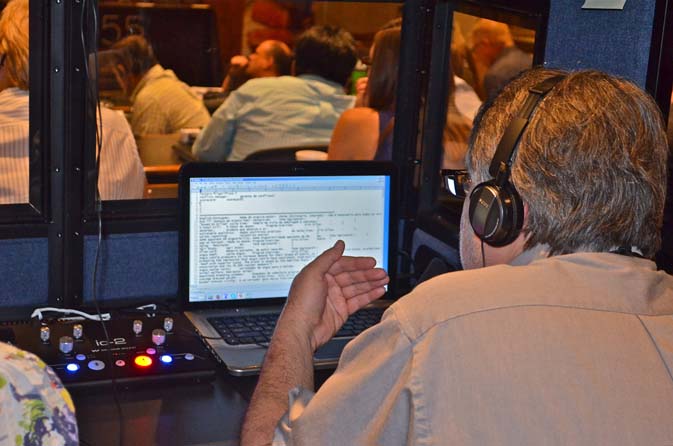There are several types of interpretation and a vast array of equipment to choose from. What is one supposed to do with all of this information? If this seems familiar, this article is for you. In this blog, we’ll break down equipment needed for interpretation, and then look at the various types of interpretation and the best equipment for each.

First, there are different types of interpretation; consecutive interpretation, and simultaneous interpretation. The former has been used since the need for interpretation began, but has largely been replaced by the latter since the invention of simultaneous interpretation equipment in the early 1900s.
Conference interpretation would not be possible without the correct technology and equipment. While there are several types of microphones and headsets to choose from, the first question that needs to be addressed is, “Do I need Infrared (IR) or Radio Frequency (RF) equipment?” Both have their own unique strengths and weaknesses.
Infrared uses the same technology as your TV remote control. It uses electromagnetic radiations with wavelengths that are longer than visible light, though shorter than radio waves. This equipment would be most appropriate for short range areas, such as smaller conference rooms or small meetings outside where the transmitter and receiver are in a clear line of site. The drawbacks of IR systems are: sensitivity to light interference, (eg bright or flashing lights), the dependence on line of site transmit ion, and short range transmission. The pros of the IR system are: Immunity to radio interference, multiple transmitters to help increase range.
Radio frequency equipment are typically preferred over infrared systems due to their superior range, ease of use, and reliability. These systems use the same range as radio wave transitions, anywhere from 3 kilohetz to 300.000 megahertz. Most systems are available in either 72 MHz or 216 MHz. Both meet ADA guidelines for the hard of hearing. 216 MHz is suggested by the ADA for language interpretation, along with other transmissions. 72 MHz offers twice the number of simultaneous channels as 216 MHz. However, 216 MHz offers nearly twice the transmission range as 72 MHz, from a stationary transmitter. The drawbacks of the RF system are: Susceptibility to radio interference.
No matter the equipment needed for your event, Translation Excellence can provide what you need. We offer accessories, earphones, microphones, headset, transmitters, receivers, and so much more. Just head over to our products page, email us, or give us a call at (720) 325-0459.
____________________________________________________________________
You may also be interested in the following:
Ebook: A Resource for Working With Interpreters and Interpretation Equipment
Article: How to Become a UN Interpreter






